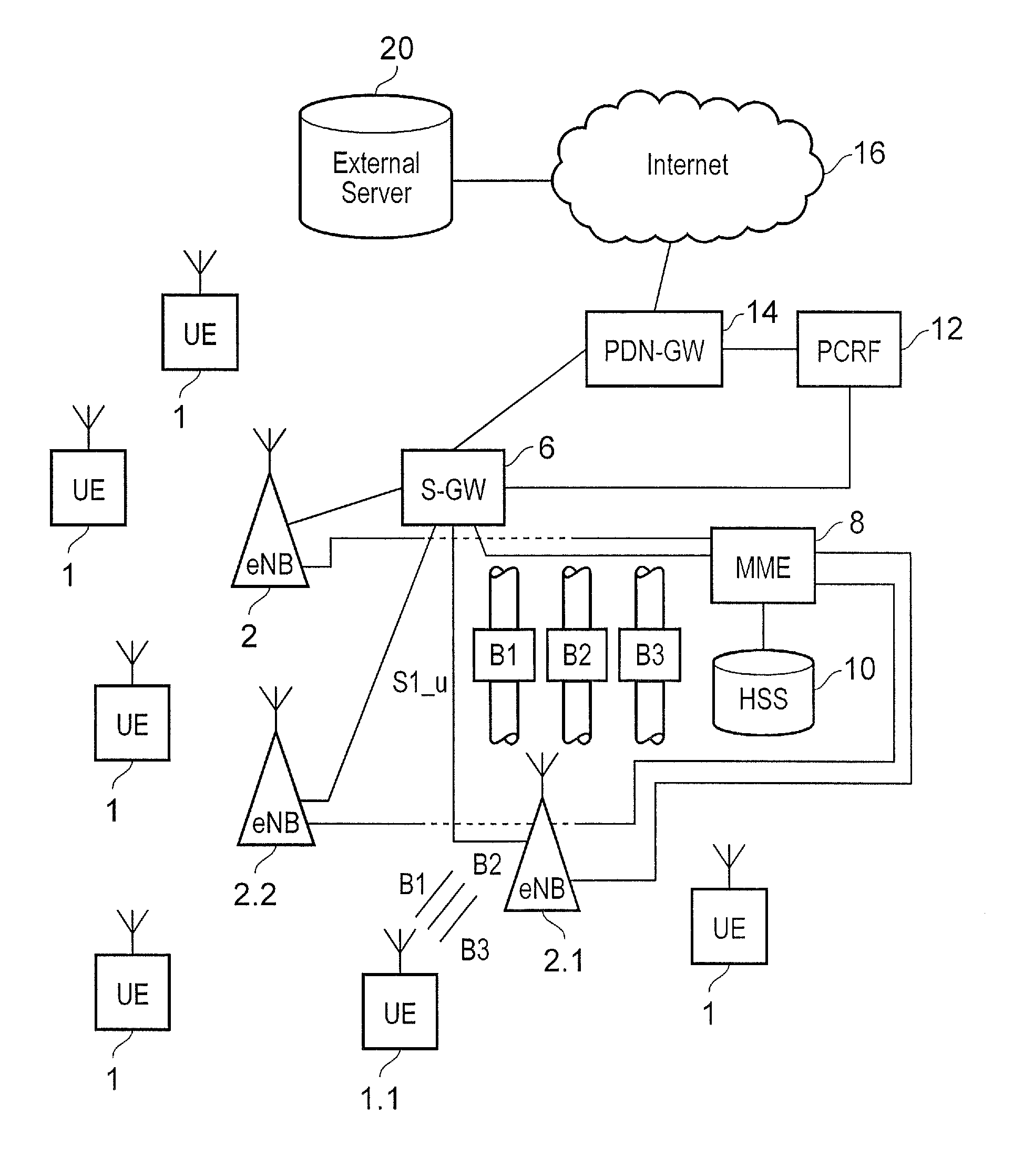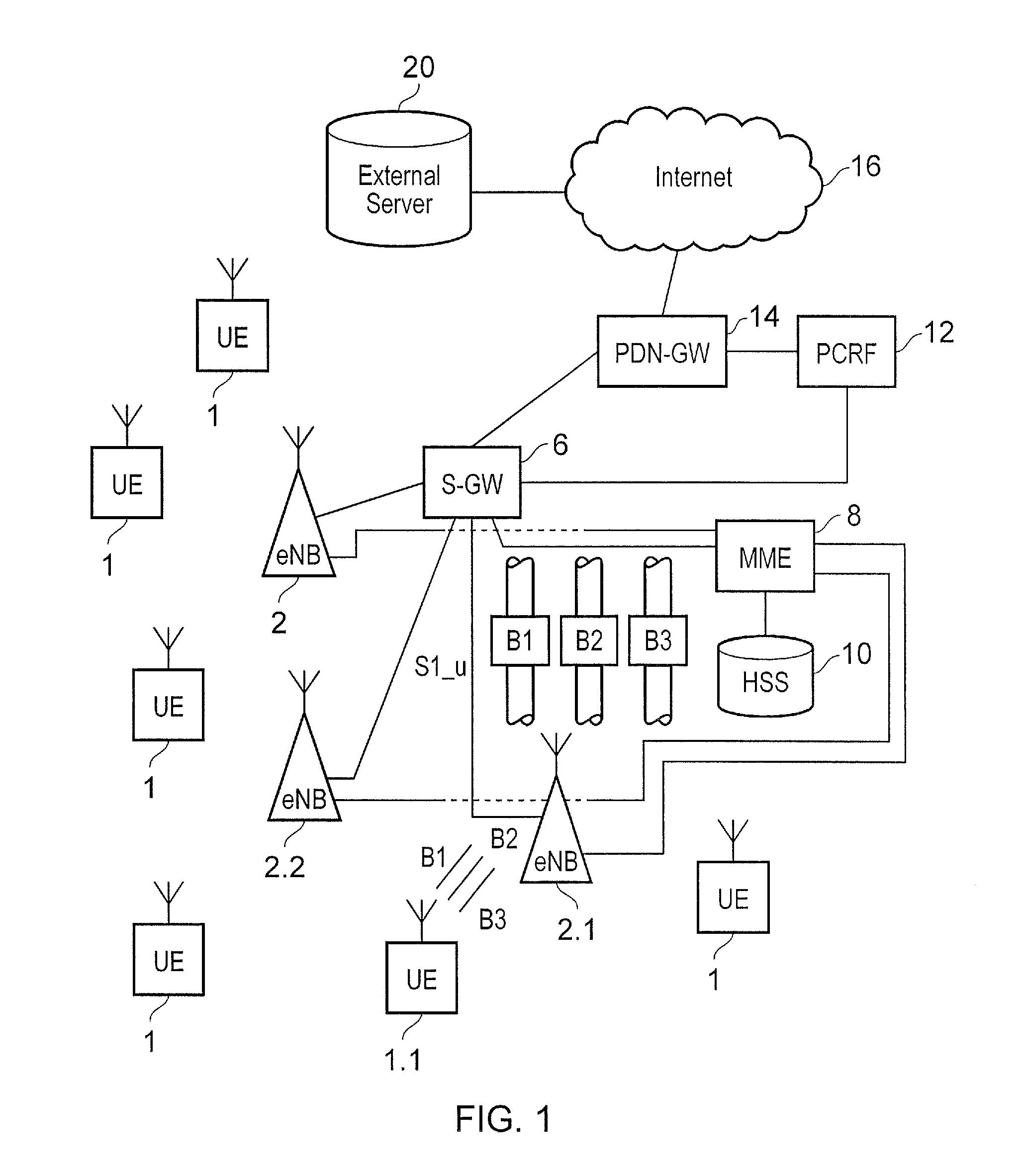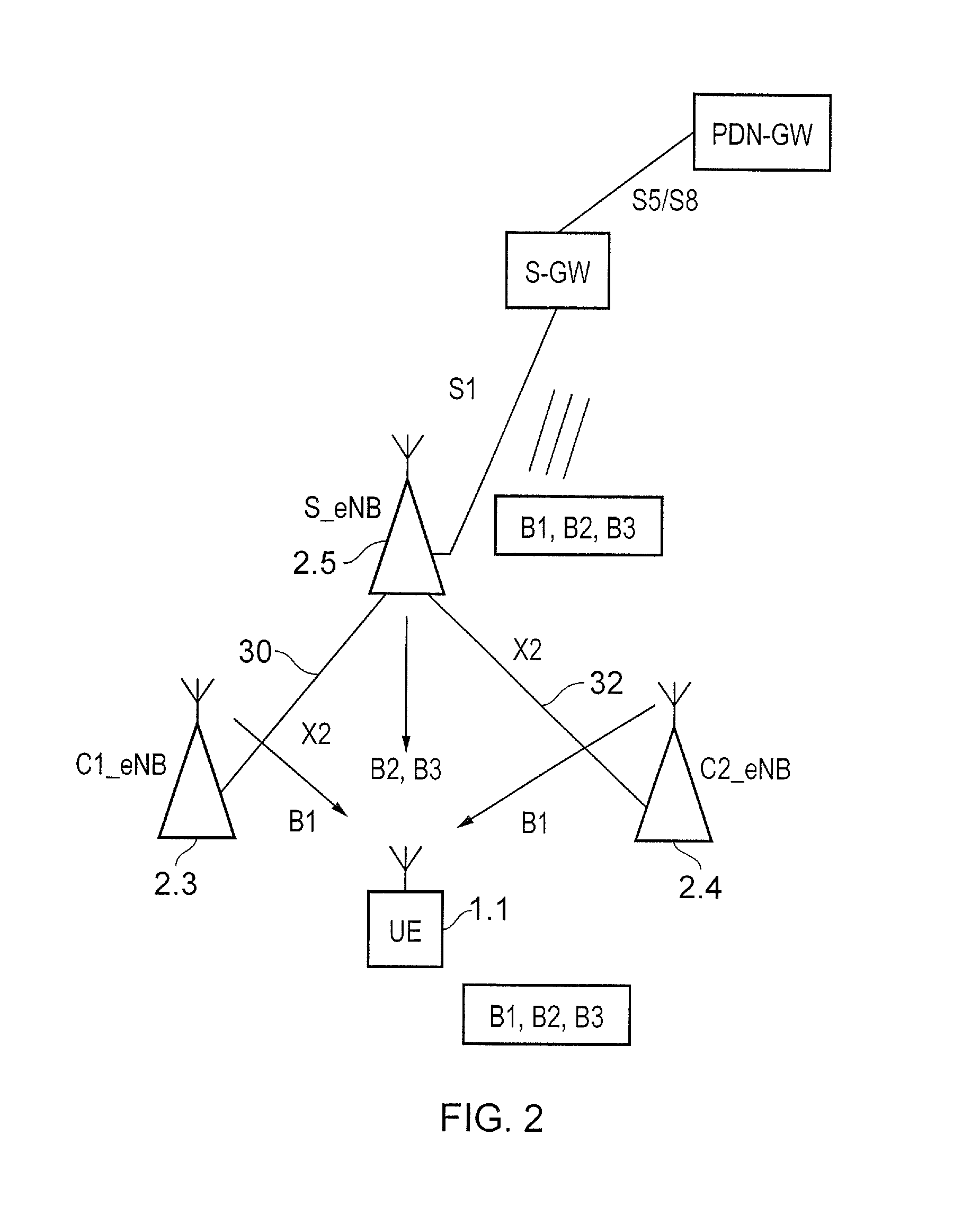Mobile communications network, infrastructure equipment and method
- Summary
- Abstract
- Description
- Claims
- Application Information
AI Technical Summary
Benefits of technology
Problems solved by technology
Method used
Image
Examples
Embodiment Construction
[0019]Embodiments of the present invention will now be described with reference to an implementation which uses a mobile communications network operating in accordance with the 3GPP Long Term Evolution (LTE) standard. FIG. 1 provides the example architecture of an LTE network. As shown in FIG. 1 and as with a conventional mobile communications network, communications terminals (UE) 1 are arranged to communicate data to and from base stations 2 which are referred to in LTE as enhanced NodeBs (eNB). For transmitting and receiving data via the wireless access interface the communications terminals 1 each include a transmitter / receiver unit 3.
[0020]The base stations or eNB's 2 are connected to a serving gateway S-GW 6 which is arranged to perform routing and management of mobile communications services to the communications terminals 1 as they roam throughout the mobile radio network. In order to maintain mobility management and connectivity, a mobility management entity (MME) 8 manages...
PUM
 Login to View More
Login to View More Abstract
Description
Claims
Application Information
 Login to View More
Login to View More - R&D
- Intellectual Property
- Life Sciences
- Materials
- Tech Scout
- Unparalleled Data Quality
- Higher Quality Content
- 60% Fewer Hallucinations
Browse by: Latest US Patents, China's latest patents, Technical Efficacy Thesaurus, Application Domain, Technology Topic, Popular Technical Reports.
© 2025 PatSnap. All rights reserved.Legal|Privacy policy|Modern Slavery Act Transparency Statement|Sitemap|About US| Contact US: help@patsnap.com



